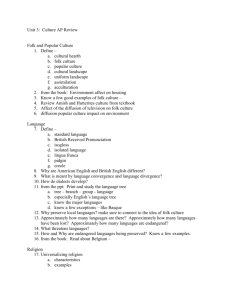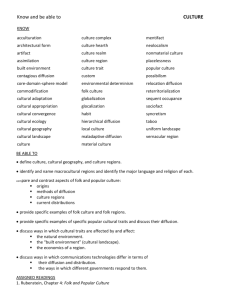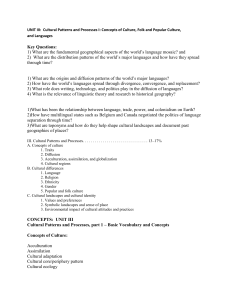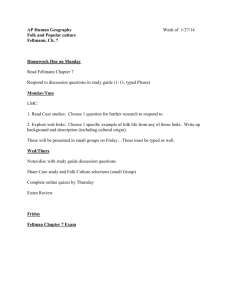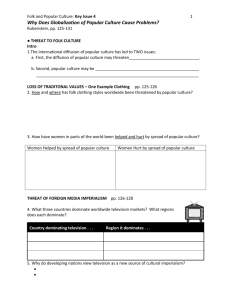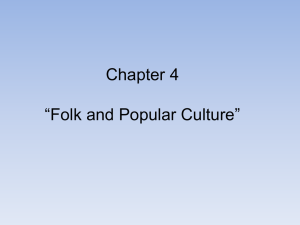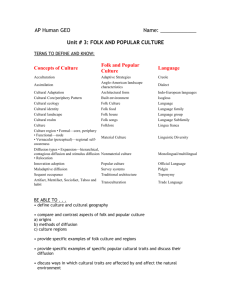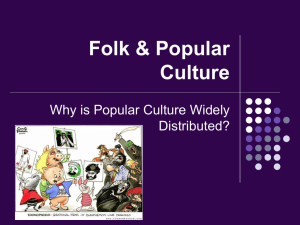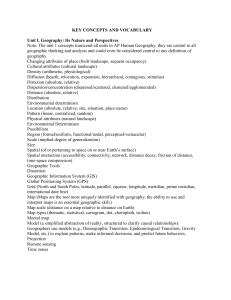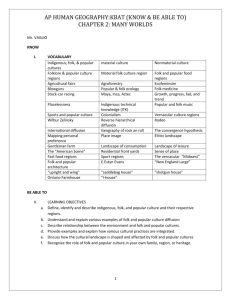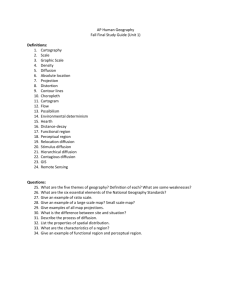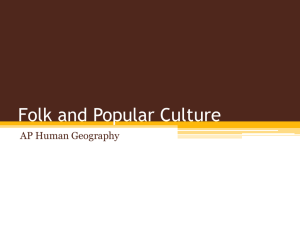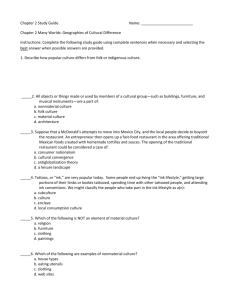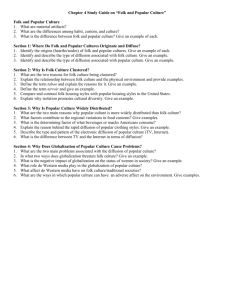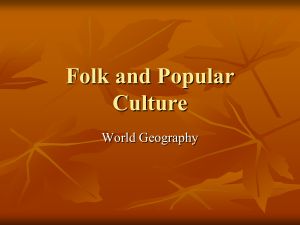FOLK AND POPULAR CULTURE
advertisement
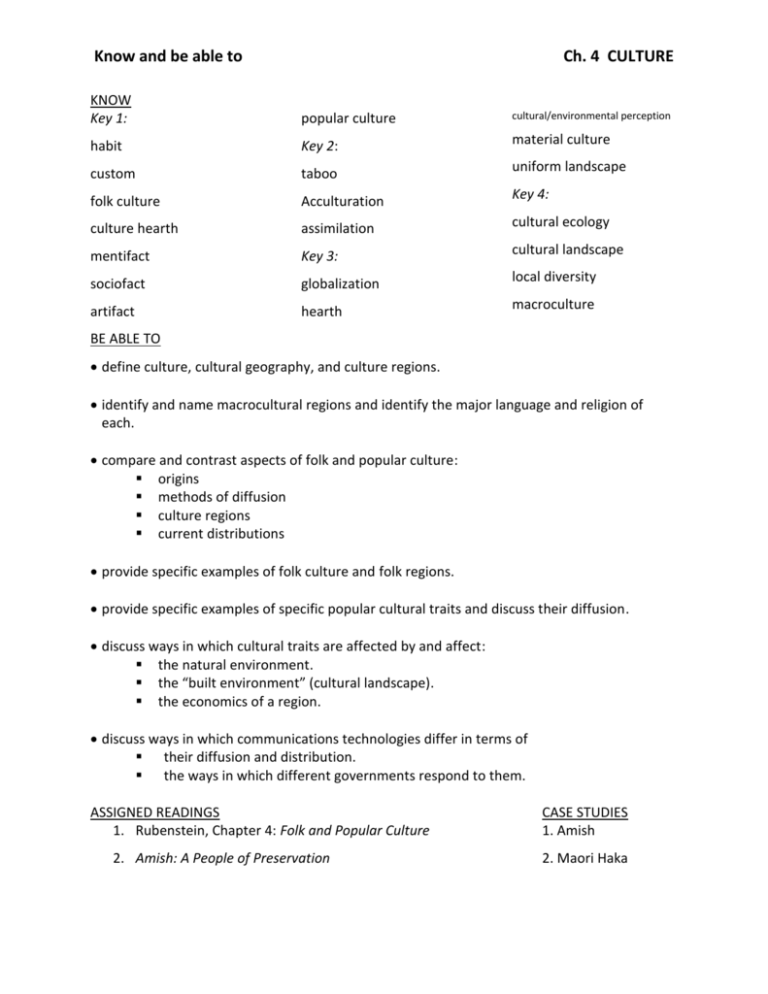
Know and be able to Ch. 4 CULTURE KNOW Key 1: popular culture habit Key 2: material culture custom taboo uniform landscape folk culture Acculturation Key 4: culture hearth assimilation cultural ecology mentifact Key 3: cultural landscape sociofact globalization local diversity artifact hearth macroculture cultural/environmental perception BE ABLE TO define culture, cultural geography, and culture regions. identify and name macrocultural regions and identify the major language and religion of each. compare and contrast aspects of folk and popular culture: origins methods of diffusion culture regions current distributions provide specific examples of folk culture and folk regions. provide specific examples of specific popular cultural traits and discuss their diffusion. discuss ways in which cultural traits are affected by and affect: the natural environment. the “built environment” (cultural landscape). the economics of a region. discuss ways in which communications technologies differ in terms of their diffusion and distribution. the ways in which different governments respond to them. ASSIGNED READINGS 1. Rubenstein, Chapter 4: Folk and Popular Culture 2. Amish: A People of Preservation CASE STUDIES 1. Amish 2. Maori Haka INTRODUCTION TO CH. 4 CULTURE p. 114-115 1. In Chapter 1, culture was shown to combine three things:___________________, ______________, ______________________. 2. Material artifacts of culture: __________ objects that a group has and leaves behind for the future. 3. Two locations have ___________ cultural beliefs, objects, and institutions because people bring along their culture when they ______________. 4. _____________ culture derives from the survival activities of everyone’s daily life______________, _______________, _________________. 5. ____________________- the arts and recreation. 6. ________________: a repetitive act that an individual performs, such as wearing jeans to class every day. 7. ________________: a repetitive act of a group, performed to the extent that it becomes characteristic of the group, such as American university students wear jeans to class every day. 8. A ___________ does not mean that the act has been adopted by most of the society’s population. 9. Think of you own examples of habits that most of society hasn’t adopted: 10. ___________________: traditionally practiced by small, homogeneous (same) groups living in isolated rural areas and may include a custom (such as wearing a sarong in Malaysia or a sari in India). 11. __________________: found in large, heterogeneous societies that share certain habits despite differences in other personal characteristics. 12. Due to ___________________, popular culture is becoming more dominant, threatening the survival of unique folk cultures. 13. The disappearance of local folk culture reduces _________________ in the world.



